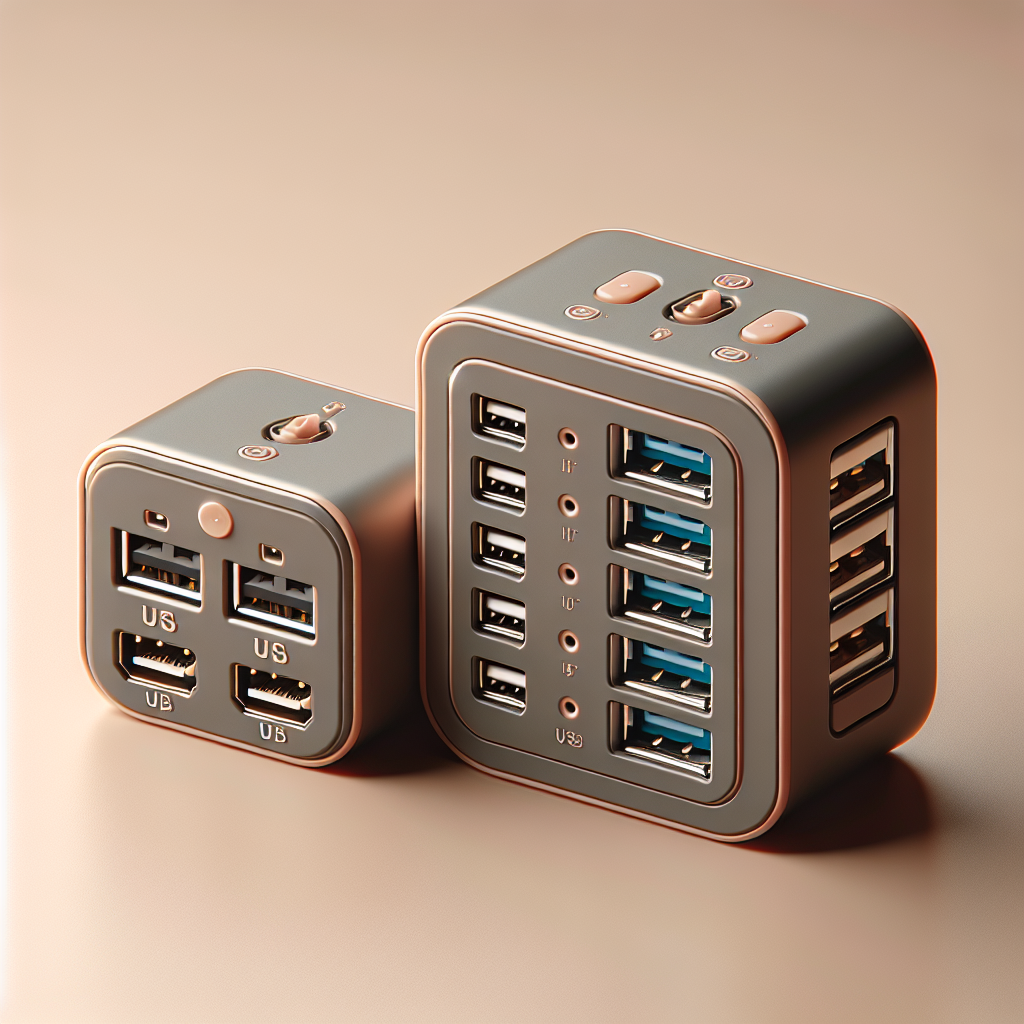
Introduction
With the ever-expanding need for connecting multiple devices to our computers or power sources, USB (Universal Serial Bus) connectivity has become increasingly crucial. Among the common solutions to this demand are USB splitters and USB hubs. While they may sound similar, each device serves distinct purposes and offers unique functionalities. This article delves into what a USB splitter is, how it contrasts with a USB hub, and their respective applications in everyday technology.
| Feature | USB Splitter | USB Hub |
|---|---|---|
| Purpose | Divides a single USB connection into multiple outputs | Allows multiple USB devices to connect to a single USB port |
| Power Supply | Requires external power source for charging | Usually powered through the device it connects to |
| Data Transfer | Limited data transfer capability | Offers multiple high-speed data transfer |
| Typical Use Cases | Powering multiple devices, charging phones/tablets | Connecting multiple peripherals like keyboards, mice, printers |
What is a USB Splitter?
A USB splitter is a device designed to take a single USB output and split it into multiple outputs. This allows users to charge or power several devices simultaneously. Typically, USB splitters come in various configurations, such as 2-way or 4-way splitters, designed to cater to user needs.
Functionality of USB Splitters
The main function of USB splitters is to provide a straightforward method to plug in multiple USB-powered devices. They function primarily for charging rather than data transfer, which means that while you can connect several gadgets, their data may not be transmitted simultaneously.
Types of USB Splitters
- Passive Splitters: These do not amplify power. When devices are connected, the total current is divided among them, potentially leading to inadequate power for charging.
- Active Splitters: These typically require an external power source. They can provide sufficient power for charging multiple devices effectively.
What is a USB Hub?
A USB hub, on the other hand, serves a broader functionality. It creates additional USB ports from a single port and allows users to connect multiple USB devices. Unlike a USB splitter, USB hubs facilitate data transfer between connected devices and the computer. They are versatile solutions for connecting peripherals, allowing users to use devices like mice, keyboards, external drives, and more without the need for multiple direct connections to the computer.
Functionality of USB Hubs
USB hubs function by allowing communication and data transfer from multiple devices through one USB port. Most USB hubs support various USB standards: USB 2.0, 3.0, and even 3.1, which influences the data transfer speeds they can achieve.
Key Features of USB Hubs
- Data Transfer: USB hubs are designed to support high-speed data transfers among connected devices, making them suitable for peripherals needing fast communication.
- Self-Powered vs. Bus-Powered: USB hubs can be either self-powered (requiring an external power source) or bus-powered (drawing power from the computer). Self-powered hubs often offer higher power delivery and support more devices.
Key Differences Between USB Splitters and USB Hubs
While USB splitters and hubs may look similar and serve the need for connecting multiple devices, they fulfill different roles within the USB ecosystem. Here are the key differences:
Differences in Functionality
| Aspect | USB Splitter | USB Hub |
|---|---|---|
| Purpose | Mainly for charging multiple devices simultaneously | Allows connection and data communication for multiple devices |
| Data Transfer Capability | Typically limited or nonexistent | Facilitates high-speed data transfer |
| Power Management | Power divided among devices | Better power management based on bus power or external power |
Use Cases
– USB Splitters: Ideal for charging multiple smartphones, tablets, or similar devices. They are prevalent in homes and offices where charging multiple devices at once is crucial.
– USB Hubs: Excellent for workplaces and setups needing multiple peripheral connections. This can include keyboards, mice, printers, scanners, and external storage devices.
Choosing Between a USB Splitter and a USB Hub
Your choice between a USB splitter and a USB hub will depend on your specific needs:
- If you primarily need to charge multiple devices quickly, a USB splitter may be the suitable option.
- If you require multiple data connections and the ability to work with peripheral devices, a USB hub should be your go-to solution.
Conclusion
Both USB splitters and USB hubs play crucial roles in ensuring the seamless connectivity of numerous devices in today’s tech environment. Understanding their functionalities and differences can help you make better decisions when choosing the right equipment for your needs. Whenever you find yourself needing extra ports or simply want to charge multiple devices simultaneously, consider the roles these devices can play in enhancing your digital experience.
Final Thoughts
In a world where connectivity is integral to productivity, investing in the right USB equipment can significantly improve your experience. Be sure to assess your usage requirements carefully before making a purchase.
